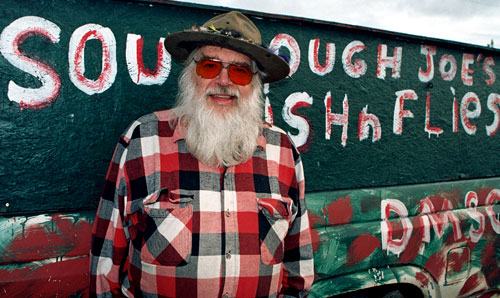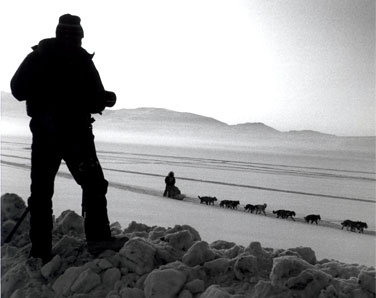 |
Down in the Valley Glennallen is a small town that provides services to the surrounding communities of the Copper River Valley. You’ll find Athabascan villages at the confluences of the Copper River and its tributaries. Trails, and later, highways, paralleled the rivers of the region. Native villages here have their own local government, but the region as a whole has no official government other than the school board. |
The Copper Valley is underlain with permafrost, which could melt and shift the pipe. So the pipe was built to run above ground. Heat transfer fins in the upright posts help keep the ground frozen. The pipe rests on teflon-coated crossbeams, so it can move without breaking during earthquakes. You can see the Pipeline before it crosses under the highway in Glennallen on the north side of the road. |
The visitor center is in the gray-blue building next to the gas station. It has displays, maps, brochures, visitor guides and a knowledgeable staff who can give you advice on where to stay and how to have a good time in local communities as well as elsewhere in the state. |
|
These huge peaks rise above the lowlands and are clearly visible throughout much of the summer. The four mountains that visitors ask most about in Glennallen are (from north to south): Mt. Sanford (16,237 feet), Mt. Drum (12,010 feet), Mt. Wrangell (14,163 feet) and Mt. Blackburn (16,390 feet.) Mt. Blackburn is the tallest of these four peaks, but because it is the most distant from the road it looks smaller. Mt. Drum, which dominates the view in Glennallen, is actually the shortest. Mt. Wrangell is a steaming volcano. You can flightsee around the mountains from Gulkana airport.
|
Watch the Wrangell Mountains "Move"
When you’re in Glennallen, Mt. Drum is on the right of Mt. Sanford. But as you head south to Valdez, Mt. Drum gradually moves to the left of Sanford. To add to the confusion, the entire shape of Mt. Drum changes as you near Kenny Lake. Drum looks like a perfect volcanic cone from Glennallen, but becomes significantly less symmetrical from Kenny Lake.
|
|
|||
|
|||
|









 187
miles from
187
miles from 

